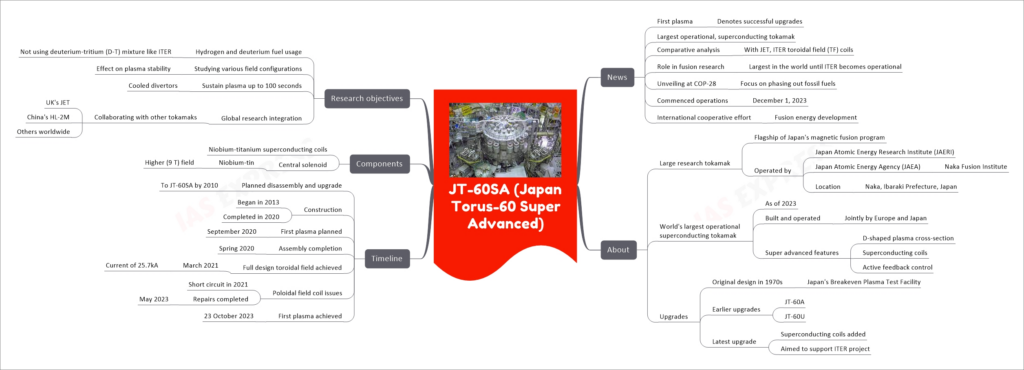JT-60SA: The Pinnacle of Fusion Reactor Technology
The JT-60SA (Japan Torus-60 Super Advanced), a monumental advancement in fusion reactor technology, has recently marked a significant milestone. As of December 2023, it stands as the world’s largest operational superconducting tokamak, a pivotal step forward in the quest for practical fusion energy. This achievement not only underscores the decades-long journey of the JT-60SA but also highlights the collaborative efforts in fusion research.
Background and Evolution of JT-60SA
JT-60SA, originally conceptualized in the 1970s as Japan’s Breakeven Plasma Test Facility, has undergone several transformations:
- Origins and Upgrades:
- Initially designed as part of Japan’s magnetic fusion program.
- Earlier models included JT-60A and JT-60U.
- The SA in its name stands for Super Advanced, embodying its cutting-edge features.
- Location and Operation:
- It is operated by the Japan Atomic Energy Agency’s Naka Fusion Institute.
- Located in Naka, Ibaraki Prefecture, Japan.
Technical Specifications and Upgrades
The JT-60SA is not just a testament to technological advancement but also a beacon of international collaboration:
- Superconducting Tokamak:
- Holds the title of the world’s largest operational superconducting tokamak as of 2023.
- A joint venture between Europe and Japan.
- Unique Features:
- Incorporates a D-shaped plasma cross-section.
- Employs superconducting coils and active feedback control for enhanced performance.
- Construction and Upgrade Timeline:
- Planned upgrade from JT-60 to JT-60SA initiated by 2010.
- Construction began in 2013, with assembly completed in 2020.
- Achieved its full design toroidal field in March 2021.
Recent Developments and Achievements
December 2023 marked a pivotal moment for JT-60SA, showcasing its role in the future of fusion energy:
- First Plasma Achievement:
- Successfully generated first plasma on 23 October 2023.
- Signifies the successful completion of its upgrades.
- Comparative Analysis:
- Its toroidal field coils have been compared with those of JET and ITER.
- Global Significance:
- Remains the largest until ITER becomes operational.
- Unveiled at COP-28, emphasizing its role in the transition away from fossil fuels.
- Commencement of Operations:
- Began operations on December 1, 2023.
- Represents a significant step in international cooperation for fusion energy development.
Research Objectives and Global Integration
JT-60SA’s research aims are crucial for the overall progress in fusion energy:
- Fuel and Plasma Studies:
- Utilizes hydrogen and deuterium, differing from ITER’s deuterium-tritium mixture.
- Focuses on studying field configurations and their effects on plasma stability.
- Collaborative Research:
- Works in conjunction with other global tokamaks, such as the UK’s JET and China’s HL-2M.
- Provides invaluable insights and experience for future ITER operations.
In conclusion, JT-60SA’s recent achievements signify a monumental leap in fusion reactor technology, showcasing the culmination of decades of research and international collaboration. Its commencement of operations and its status as the largest operational superconducting tokamak mark a critical step towards realizing practical fusion energy, with implications far beyond its Japanese and European origins.
If you like this post, please share your feedback in the comments section below so that we will upload more posts like this.


